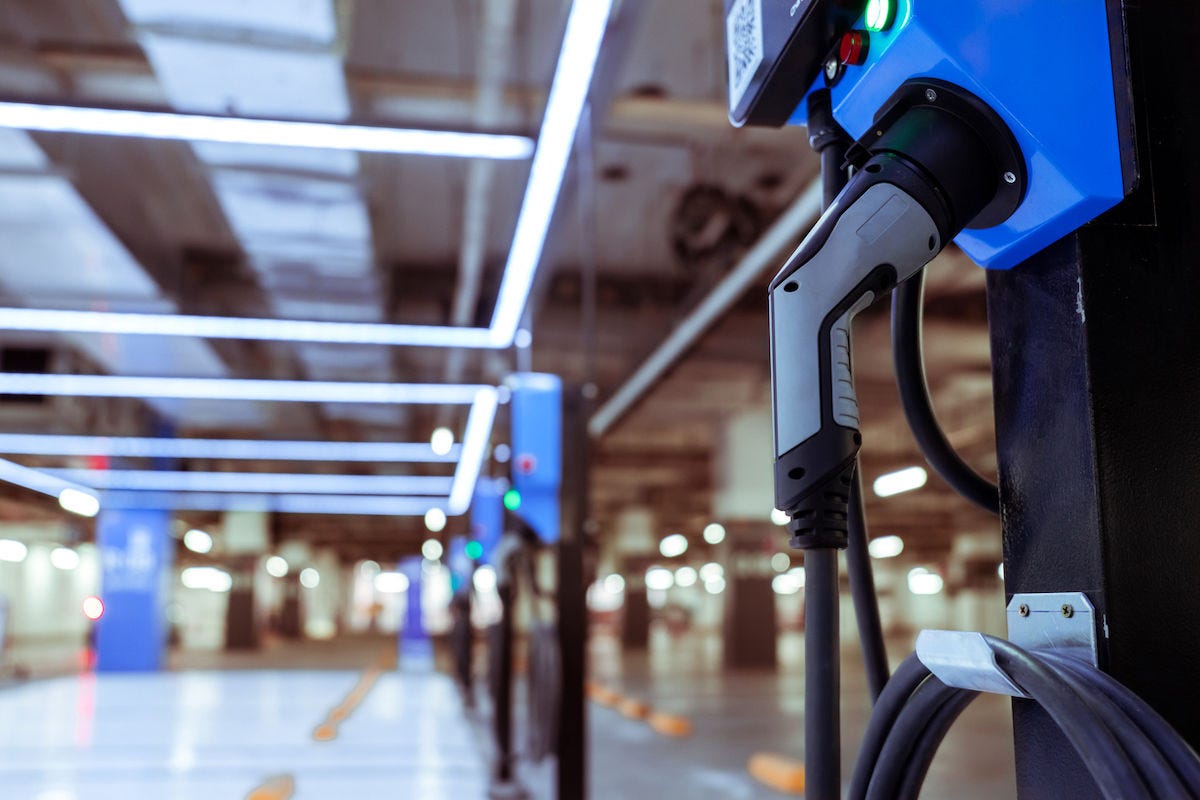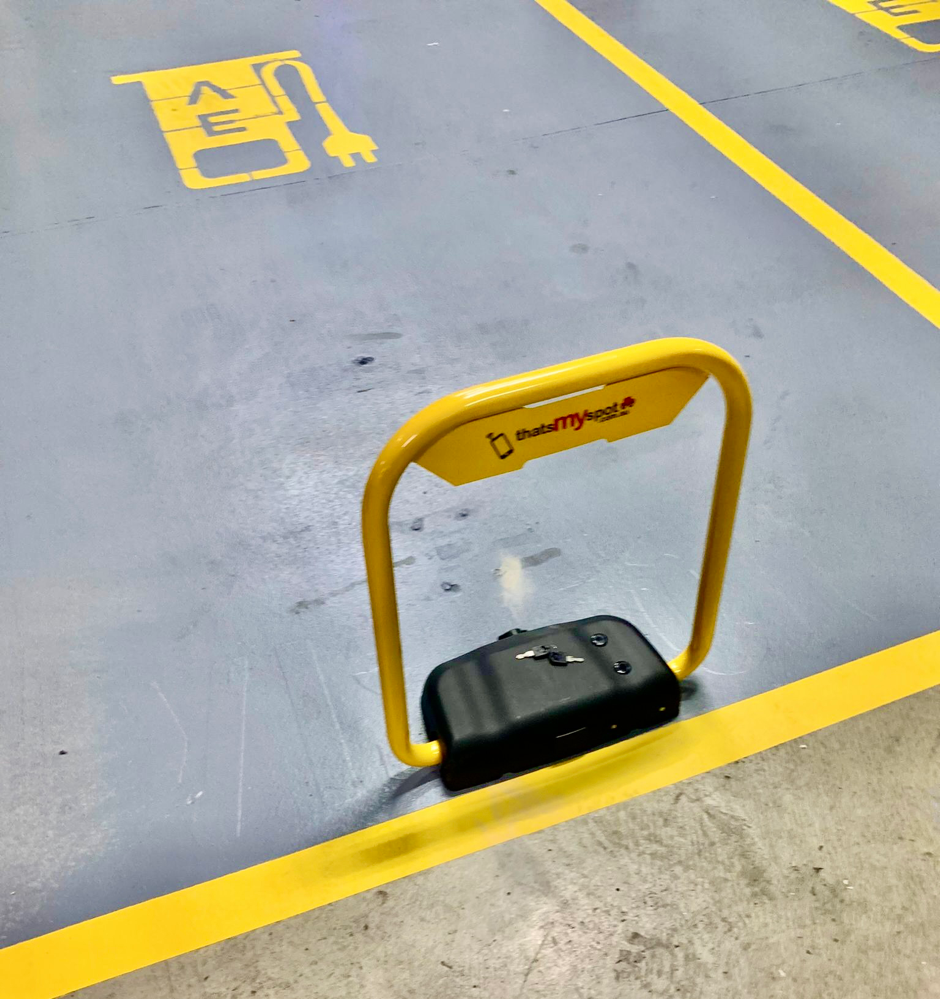In today’s guest writer article by an experienced expert on strata building car parking, Angelique Mentis, she discusses the latest best practices for EV vehicles in strata buildings, including pros and cons. Strata EV is quickly becoming a topical, confusing and high focus issue in strata buildings, so it’s timely to read about her thoughts, experiences and ideas.
[a 8:25 minute read, with 1638 words]
INTRODUCTION
From time to time, I publish articles from guest writers who have different knowledge, experiences, perspectives and ideas on strata issues to expand and challenge everyone’s awareness and thinking.
I hope you enjoy today’s guest article.
January 25, 2024
Francesco …
THE PROS AND CONS OF EV CHARGING IN STRATA BUILDINGS
by Angelique Mentis
As Australia races towards a greener future embracing electric vehicles, how do strata buildings deal with incorporating EV charging infrastructure and manage related issues?
Integrating EV charging infrastructure poses unique challenges for strata buildings compared to individual homes and residences and commercial buildings.
So, how do we best provide for EV chargers in the large number of residential strata buildings across Australia?
IN STRATA BUILDINGS WE SHARE A LOT OF FACILITIES …
Strata buildings house multiple residences.
So we’re already used to sharing a lot of areas and common facilities.
These may include common parking areas, common power usage, common electrical circuit boards, and load management for the entire building. These resources and facilities are all highly relevant to EV charging.
According to the US Department of Energy, 80 percent of EV charging happens at home, so it’s there significant demand to warrant home charging in apartment buildings in Australia.
NEW VERSUS OLD STRATA BUILDINGS: THE RETROFIT
Existing strata buildings were generally not designed for EV charging.
However, in October 2023, the National Construction Code was amended and now requires all new strata buildings to be EV ready for each parking bay in the development.
So all existing strata buildings need to think about whether and/or how to suitably retrofit for EV charging. What are the considerations they need to consider and there’s so much contradictory information out there.
So, I’ve put together this comprehensive list of the pros and cons of EV charging for strata buildings, strata managers, strata owners and strata residents.
And just to be clear, it’s not just about whether individual strata owners and residents can install their own EV chargers. Installing and drawing power to charge EVs has a definite impact on the entire strata building’s power consumption and load management.
No one wants a situation where the entire strata building browns out because it hasn’t balanced and managed power usage when EV charging was added.
Strata buildings should have fully informed discussions around EV charging viability and cost for their building, practical considerations around fair access and usage, as well as payment mechanisms by multiple strata residents.
GOVERNMENT SUPPORT AND GRANT INITIATIVES FOR EV CHARGING IN STRATA BUILDINGS
Government incentives, such as the New South Wales Government EV Ready Grant Program [and similar programmes in other state], actively motivate widespread EV adoption.
Specifically, they provide grant funding to strata buildings to subsidise the cost of installing and maintaining EV charging facilities up to $80,000 in NSW. These grants cover initial scoping reviews, supply and installation costs, required electrical modifications, and ongoing operating costs.
YES OR NO TO STRATA BUILDING EV CHARGING
Let’s look at some of the key pros and cons of installing EV charging in strata buildings.
The Pros
Convenience: Residents can charge their EVs at home, providing convenience and eliminating the need to find external charging stations.
Eases Range Anxiety: Reliable home charging reduces worry about running out of charge, known as range anxiety for EV drivers. Beneficial for those with longer commutes
Reduces Cost of per KWh Power Consumption: Nearly all the energy suppliers offer discounted electricity plans for EV charging.
Reduces Carbon Footprint Significantly: Is there an option for solar power and/or solar panels as another way to reduce building power consumption in conjunction with EV charging?
Increases Property Values: Strata buildings with EV charging facilities are more attractive and potentially command higher sales and rental values. Buildings without EV charging facilities may fail to attract potential buyers and renters.
Potential Government Grants and Rebates: Government grants and other incentives for EV charging in strata apartment buildings are currently available to encourage EV charging installation. But, they may not last so there’s pressure take advantage of the free money now.
Future Proofing for EV Trends: You’re also future-proofing the strata building and getting ahead of future EV trends by installing enough EV charging facilities.
The Cons
High Upfront Costs: EV charging is going to be a capital outlay for strata building they may not have provisioned for [chargers, electrical upgrades and fire safety]. This involves a detailed assessment of the current electrical system, and may be costly, depending on the building’s age and power load. So, considering grant funding and financing options may be necessary.
Limited Space and Parking Allocations: There may be limited space for creating or allocating EV charging bays in strata buildings with limited parking. Plus, strata buildings must cater for both EV and non-EV owners so as not to compromise non-EV parking. Plan thoughtfully with open communication to achieve an optimal balance. To overcome ICEing of EV charging bays, establish building rules around EV charging behaviour. Alternatively, you can install smart parking bollards solutions which include a booking system and other technologies to ensure fair access. These also integrate into your building management platform.
Load Management Concerns: If everyone in the strata building wants an EV charger installed in their parking spot, can the building cope with load management? Is there a way you can share EV charging bays and fairly allocate usage instead?
Complex Strata Approval Processes: As we all know, approval processes, legal, insurance, safety and regulatory controls and approvals often take a long time in strata and are fraught with complexity. By-laws may need alteration and meeting approvals may be required. Engage with expert advice to do things properly.
Ongoing Cost of Maintenance and Upkeep: Ongoing maintenance and associated repairs and maintenance may add to the strata building’s long-term costs that aren’t yet budgeted. Consider an EV charging installation plan that covers all ongoing operating, maintenance and repair expenses.
Cost Allocation and Billing: Strata buildings need transparent methods to determine how to fairly bill and allocate costs for EV charging, for both installation and ongoing repair, maintenance and operation. Individual usage and common expenses need to be split. The strata or building manager can handle this with a variety of software platforms available for EV charging systems.
Fire Safety: There has been a lot of misinformation around fire safety risks with EVs. EVs are less likely to catch fire than fuel vehicles, but do take longer to burn out. Get the proper authorised information from EVFiresafe, who have analysed every EV fire globally since 2010 to properly assess this risk.
WHAT PRACTICAL STEPS CAN YOU TAKE?
Get informed: Knowledge is power. Understand the ins and outs of EV charging installation – the costs, the space needed, how it could benefit everyone, your anticipated needs for chargers, etc. There’s plenty of information out there, like NSW EV Ready and learn about your building’s load management.
Start Conversations in Your Building: Have open discussions with your strata committee , strata owners and strata residents. Ask them questions to find out how many residents have an EV or will likely get one in the next 10 years. Use this information and discussions as your customer discovery sessions. Find out what residents’ biggest concerns are and clear up misconceptions.
Propose a Plan: Come up with a practical and cost-effective plan for rolling out EV charging system installation. Do your homework about available grant funding and subsidies. Look at alternative financing plans that are offered by many of the EV charging suppliers.
Seek Expert Help: Bring in an expert to help you understand and assess things. They can help navigate the technicalities and present independently to your strata committee and strata owners. The NSW EV Ready grant program specifically funds $2,000 for this assessment stage to cover this.
Consider Shared EV Chargers: To overcome load management and expensive electrical retrofitting, consider sharing EV charging stations in common parking areas, like visitor parking spaces. Automate and monitor EV charging equipment for optimal strata owner and resident satisfaction by using smart parking bollards and other modern technologies. Think of them like the shared pool or BBQ facilities, but for EVs.
A CASE STUDY
One of our mixed use buildings in Western Sydney consisting of 12 commercial and 48 residential tenancies, installed EV chargers in 3 of their visitor parking bays. Great start, however due to their limited visitor parking, they found that when other parking bays were full, people started using the EV charging bays for parking, and were ICEing them, so their EV residents couldn’t then charge their cars.
So they called us in to solve this problem. We installed 3 smartphone parking bollards which prevent unauthorised drivers from parking in the bays. Pre-authorised EV drivers are provided with access to these bays via a smartphone app that lowers the bollards to allow them to drive their car in and charge it. This system also allows these drivers to reserve a time/ day for their designated charging, so eliminating “range anxiety” concerns.
We’re seeing this more and more now, especially to workaround the issues of load management restrictions and to avoid very costly electrical retrofitting work to upgrade the building’s electrical capacity.
About Angelique
Angelique Mentis is is the Founder/CEO of thatsmyspot and Parking Spotz, specialising in parking solutions for strata and commercial buildings. She is also, is the President of Parking Australia, and is passionate about all things electric vehicle.
Get in touch with Angelique via her business website - https://thatsmyspot.com.au/ - or on Linkedin.






